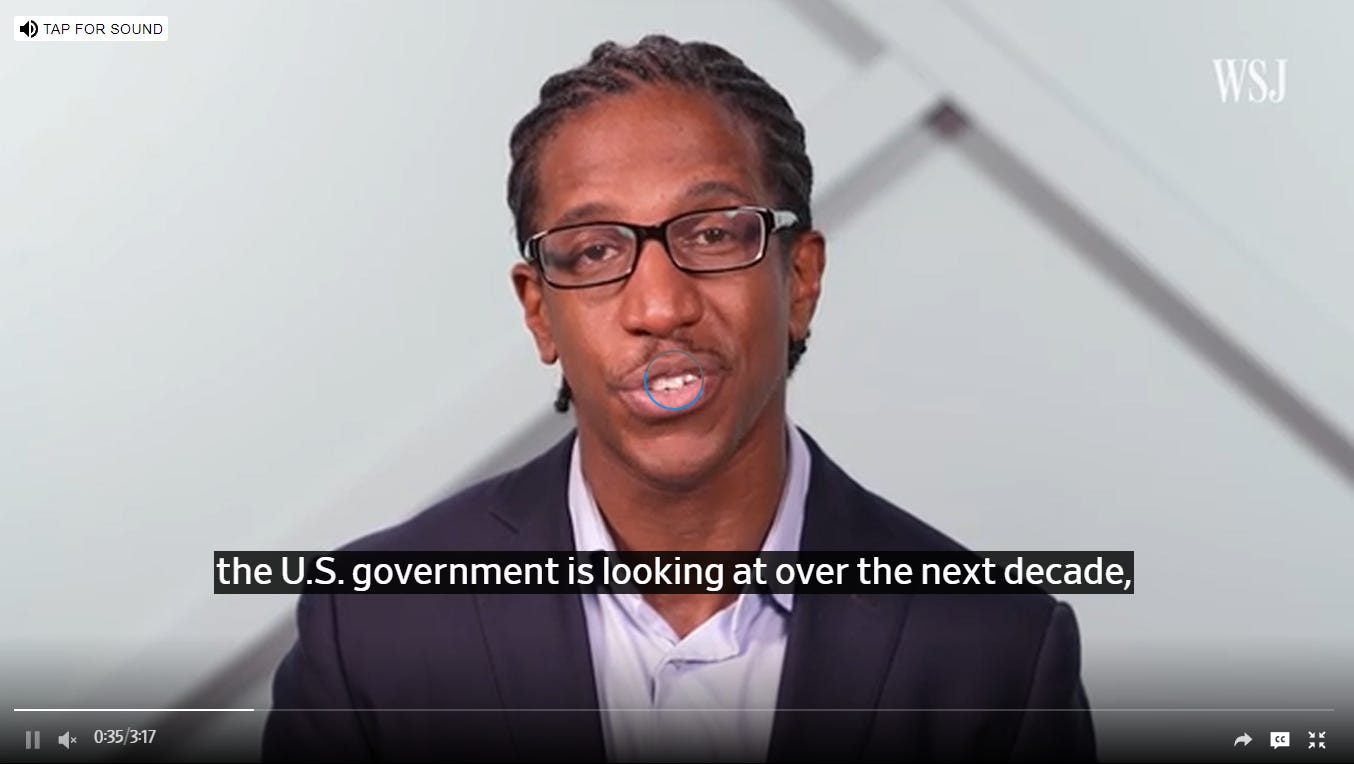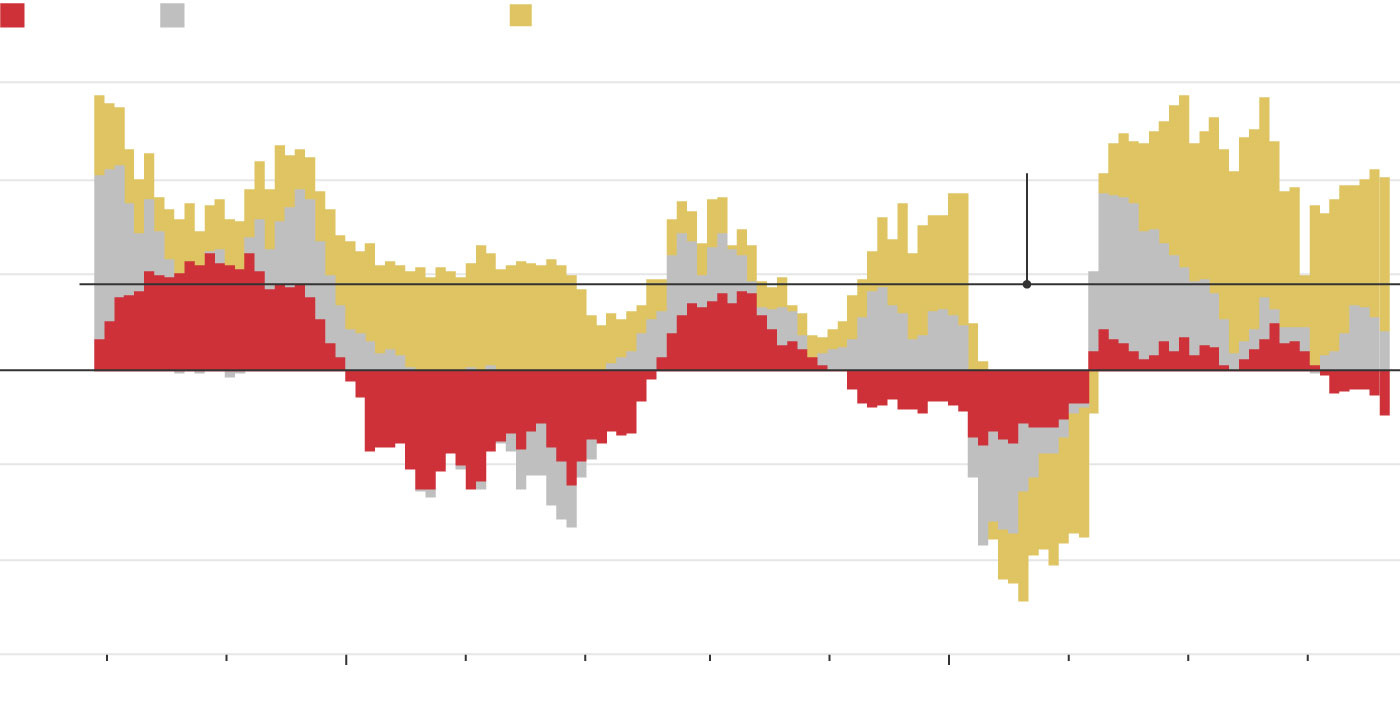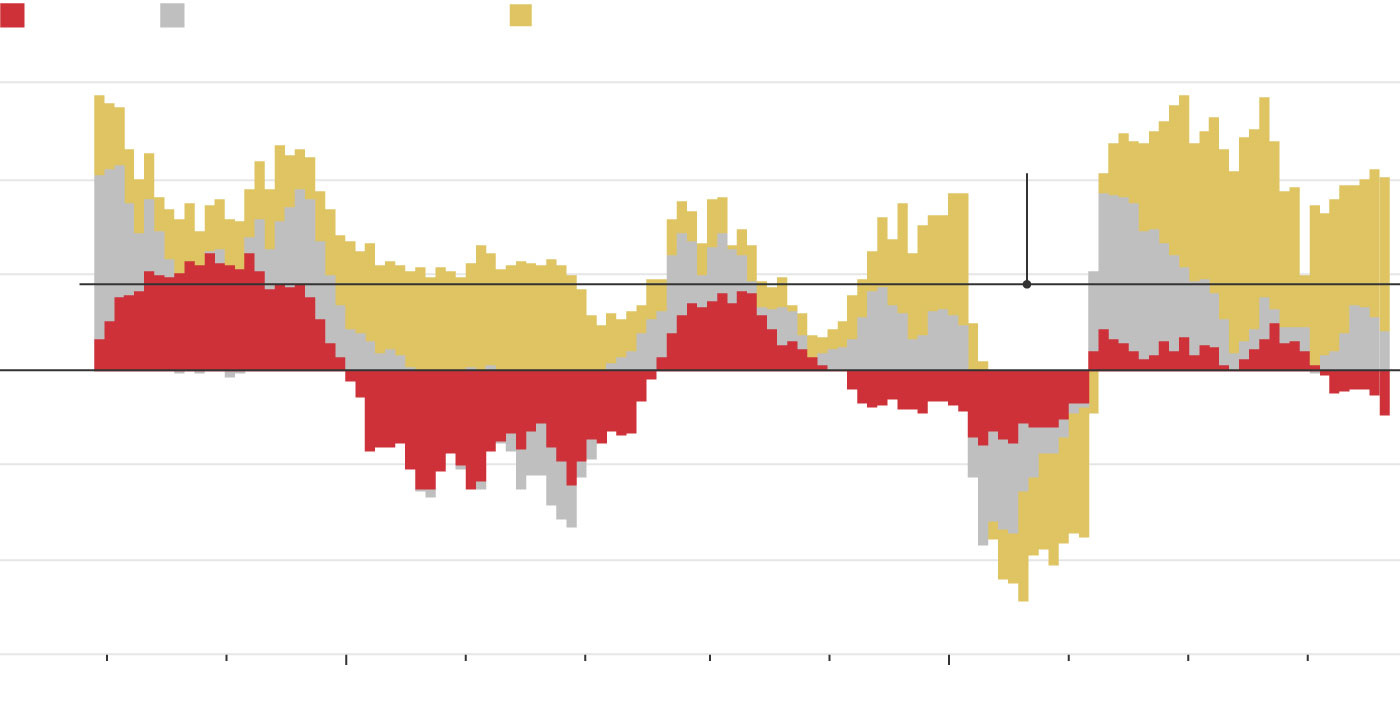Where Have All the Foreign Buyers Gone for U.S. Treasury Debt?
Overseas private investors and central banks now own about 30% of all outstanding U.S. government debt, down from roughly 43% a decade ago
By Chelsey Dulaney and Megumi Fujikawa
Foreigners no longer have an insatiable appetite for U.S. government debt. That’s bad news for Washington.
The U.S. Treasury market is in the midst of major supply and demand changes. The Federal Reserve is shedding its portfolio at a rate of about $60 billion a month. Overseas buyers who were once important sources of demand—China and Japan in particular—have become less reliable lately.
Meanwhile, supply has exploded. The U.S. Treasury has issued a net $2 trillion in new debt this year, a record when excluding the pandemic borrowing spree of 2020.
“U.S. issuance is way up, and foreign demand hasn’t gone up,” said Brad Setser, senior fellow at the Council on Foreign Relations. “And in some key categories—notably Japan and China—they don’t seem likely to be net buyers going forward.”
Earlier this month, a U.S. Treasury auction of 30-year bonds was met with tepid demand, spooking markets broadly as investors feared more supply-demand disruptions to come. A group of Wall Street executives that advise the U.S. Treasury, known as the Treasury Borrowing Advisory Committee, recently flagged waning demand from two big-time buyers: banks and foreigners.
Over the medium term, the committee said it expects “demand from banks and foreign investors to be more limited.”
In response to recent demand weakness, Treasury has shifted to issuing shorter-term bonds that are in higher demand, helping to restore market stability. The yield on the U.S. 10-year note, which shot above 5% in October, is now at around 4.4%.
Foreigners, including private investors and central banks, now own about 30% of all outstanding U.S. Treasury securities, down from roughly 43% a decade ago, according to data from the Securities Industry and Financial Markets Association.
Overseas investors sold a net $2.4 billion in long-term Treasurys in September, bringing their holdings to $6.5 trillion, according to data from the U.S. Treasury released Thursday. On a rolling 12-month basis, which helps to smooth out volatility in monthly data, the pace of foreign buying has eased to around $300 billion in recent months from levels above $400 billion for much of last year, according to data from the Council on Foreign Relations that also adjusts for changes in valuation.
The makeup of overseas demand has shifted. European investors bought $214 billion in Treasurys over the past 12 months, according to Goldman Sachs data. Latin America and the Middle East, flush with oil profits, also added to holdings. That has helped offset a $182 billion decline in holdings from Japan and China.
For some overseas investors such as David Coombs, head of multi-asset investments at U.K. investment manager Rathbones, U.S. government bonds remain an investment too good to pass up.
Coombs has been buying U.S. Treasurys lately for the first time in 15 years, drawn in by the rise in yields and the chance to compound those returns with exposure to the dollar. Treasurys now make up 9% of his portfolio, even larger than his holding of U.K. bonds and nearly half of his total fixed-income assets.
“In the U.S. it might look a bit bleak, but from our perspective over here, you look in a much better shape than we are,” he said. “You’ve got some real value at these levels.”
Shaniel Ramjee, a fund manager at the Swiss asset manager Pictet, also ramped up purchases of U.S. Treasurys when the U.S. 10-year yield hit 5% last month. Yields rise as prices fall.
Ramjee said he remained concerned about the U.S. government’s widening deficits. But few other developed-market government bonds offer real yields—or interest rates exceeding expected inflation—comparable to those offered by U.S. bonds.
Demand from private investors in Europe, however, isn’t enough to offset the longer-term structural changes that are weighing on foreign demand for Treasurys, said Praveen Korapaty, chief interest rates strategist at Goldman Sachs.
“Are they actually swinging the needle here? Not really,” he said. “The foreign ownership of Treasurys continues to decline and we expect that will remain the case for the foreseeable future.”
Foreign Flows
Buying or selling of U.S. Treasurys from overseas
Korapaty doesn’t foresee a demand-doomsday scenario. Higher yields have a tendency to draw in new sets of buyers, which lately have included U.S. retail investors.
Central banks, voracious buyers of U.S. Treasurys in the 2000s and early 2010s, remain a weak spot for overseas Treasury demand. The strength of the dollar has spurred many central banks, including those in China and Japan, to stop adding to their stockpiles of U.S. Treasurys or even to sell them down, analysts say. They use the dollars they get from selling U.S. bonds to buy their own currencies, boosting the value.
At the same time, China has diversified reserves away from Treasurys and has been investing in bonds backed by U.S. government agencies such as Freddie Mac that offer higher yields than Treasurys. China has bought a net $32 billion of those in the year through August, according to data from the Council on Foreign Relations.
Japanese private investors—including banks, pensions and insurers—are a source of worry. Many have invested heavily in U.S. Treasurys as a way to escape ultralow, and at times negative, interest rates at home. Between those investors and the
, the country is the largest foreign holder of U.S. Treasurys with a stockpile worth more than $1 trillion.
The Bank of Japan has allowed government bond yields to rise as the country finally looks set to escape its deflationary spiral, which should encourage investors to invest more in the domestic government bond market.
So far, the central bank’s move hasn’t resulted in a huge change to demand. Japanese investors were net sellers of long-term U.S. Treasurys last year but have returned to buying in 2023.
Masatoshi Yamauchi, an executive officer at All Nippon Asset Management, whose main clients include regional banks, said Japanese banks have continued to invest in U.S. Treasurys, but with shorter durations, and without hedging currency risk, which is currently very costly for Japanese investors. But they, too, might soon lose interest in the U.S., he warned.
“They are getting full,” he said. “Interest rates are becoming more attractive in their mother market.”
Write to Chelsey Dulaney at chelsey.dulaney@wsj.com and Megumi Fujikawa at megumi.fujikawa@wsj.com
Campamento Tortuguero Playa Hermosa is a turtle sanctuary on Bonfil Beach outside of Acapulco that rescues sea turtle eggs that would be likely destroyed by vehicles on the beaches or pilfered by tourists. The sanctuary protects the eggs, hatches them and releases the babies into the ocean while protecting them from seagulls and other winged predators.
The 35-year-old sanctuary is run by the mother/daughter duo of Monica and Michel Vallarino, who have helped educate the community and the tourists on the ecology of the turtles while simultaneously providing a refuge for puppies, kittens, ducks, rabbits, and other wayward animals.
The Art of Liberty Foundation hosted an annual fundraiser from 2018-2020 called the Art of Liberty on the Beach (aKa The Turtle Party), where many of the leading artists in the liberty movement have rocked the sanctuary including Grant "Prezence" Ellman, Truniversal/Free Willow, Alais Clay, the Freenauts, DJ Koala, DJ Ramiro Romani and ELA-mental among others.
The sanctuary was devasted by Hurricane Otis, a category five hurricane that hit Acapulco and Bonfil Beach on November 2nd 2023.
25% of Funds Raised Will Benefit Other Residents of Bonfil Beach
The Art of Liberty Foundation is organizing a fundraiser where 100% of the proceeds will go to direct relief. The Vallarinos have agreed to share 25% of the proceeds with other Bonfil Beach residents in need to be distributed at their discretion.








